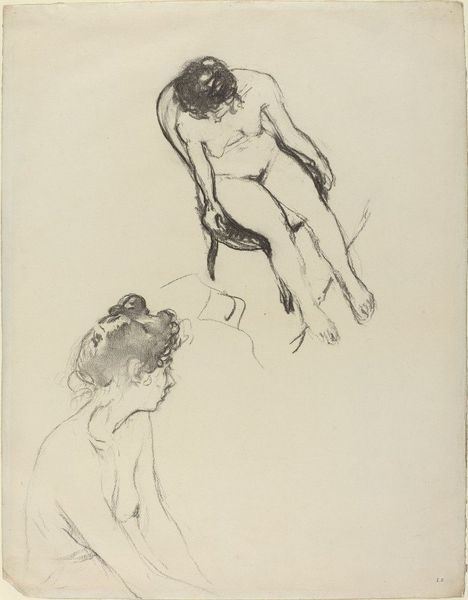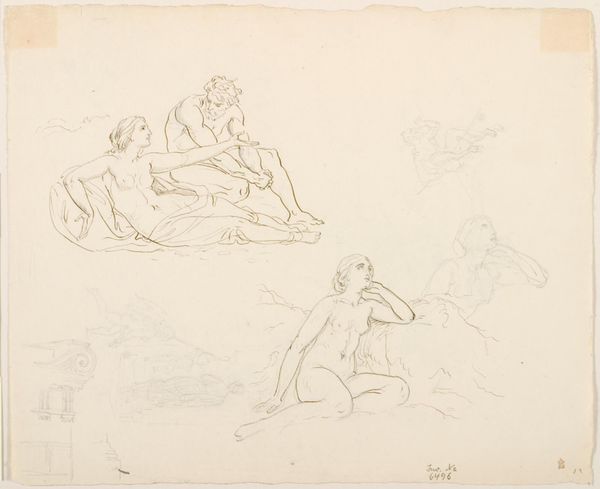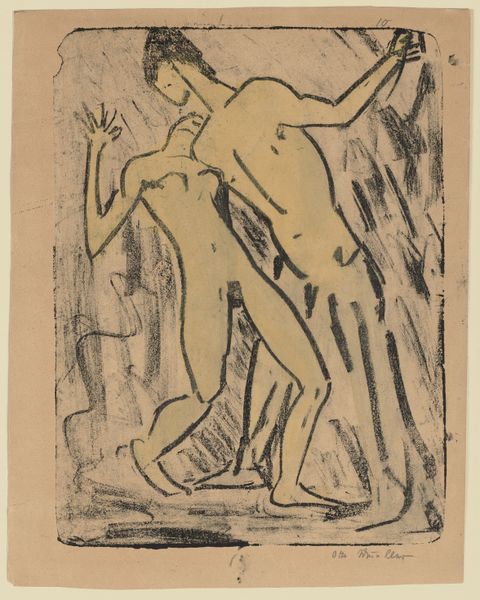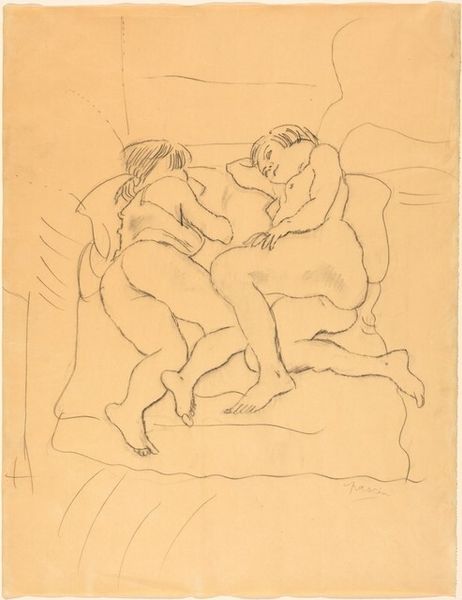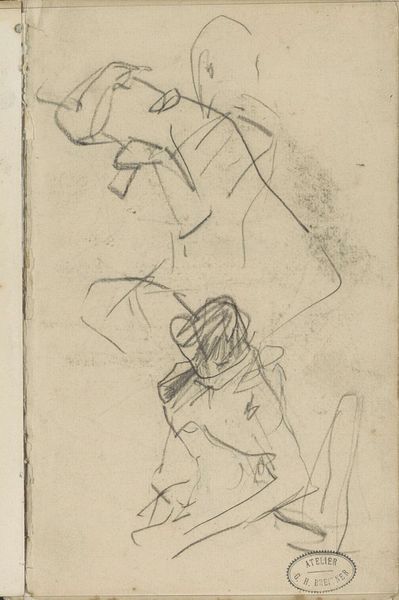
drawing, pen
#
drawing
#
ink drawing
#
pen sketch
#
landscape
#
figuration
#
pen
#
modernism
Dimensions: overall: 32.1 x 23.8 cm (12 5/8 x 9 3/8 in.)
Copyright: National Gallery of Art: CC0 1.0
Curator: Marc Chagall's pen and ink drawing, "The Finding of Moses," dates to around 1930 and presents a poignant biblical narrative with the artist's characteristic modernist style. Editor: There’s a real sense of vulnerability in the lines; they're so spare, almost like whispers capturing a tender but precarious moment of rescue. Curator: Exactly. Chagall boils down the Old Testament narrative to its core components, using line work that reminds one of the speed and urgency with which the figures must have acted. Notice the woman with outstretched hands, an invocation to a higher power for protection? Her open palms and face uplifted is such a clear expression of hope in crisis. Editor: It resonates powerfully considering Chagall's own experience fleeing persecution. He draws from deep well of Jewish history here and makes visible not only a specific biblical event, but also its archetypal echoes through Jewish memory in the 20th century. It mirrors his biography so profoundly. Curator: Indeed. We can consider this artwork as a representation of intergenerational resilience. What do you make of the figure kneeling? Is that the Pharoah's daughter who actually finds the child Moses? Editor: It’s really compelling to consider how her gesture mimics Miriam's in the Exodus story; the postures resonate across time, bridging their experiences of faith, action and trauma with a visual language. She is not passive—she's active, attentive. It reflects on women as central to communal continuity. Curator: This makes one rethink how such iconographic themes are continuously renegotiated, with these same symbols echoing across centuries in the popular imagination, offering both continuity and sites for revision, which can become so complex and poignant, as in Chagall's own biography. Editor: Agreed. Looking at "The Finding of Moses" reinforces for me the power of minimalism, showing how a simple composition when viewed through a historical lens amplifies cultural context and collective emotion into a shared, resilient visual memory.
Comments
No comments
Be the first to comment and join the conversation on the ultimate creative platform.


